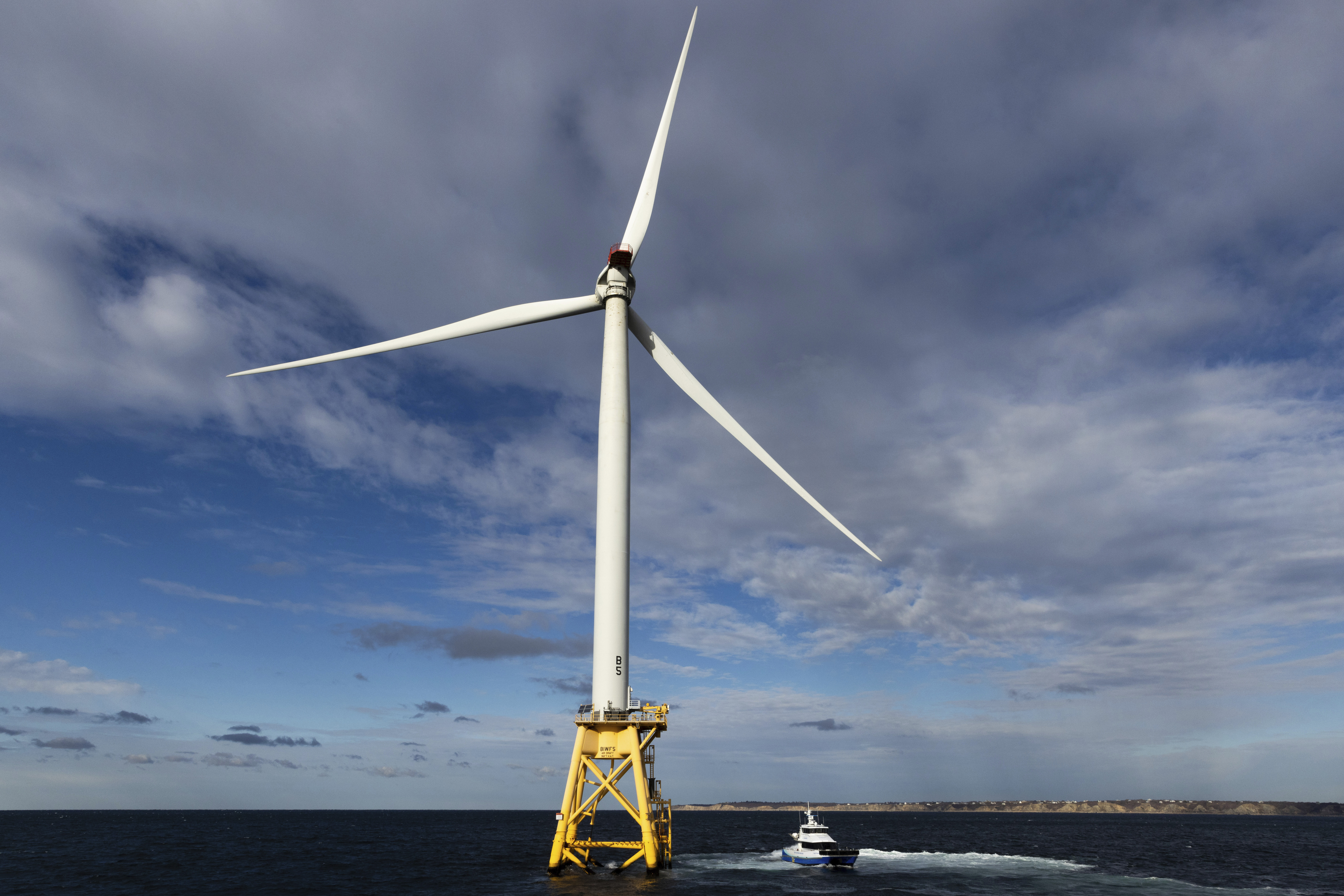Trump's Strategy to Eliminate Offshore Wind Is Showing Results
The conclusion of a project in New Jersey “plays right into the hands of Donald Trump.”

New Jersey Governor Phil Murphy, who dedicated years to establishing his state as a central hub for offshore wind, announced on Monday that New Jersey would cease approving new projects in the sector. This decision represents a significant setback for initiatives that Trump and fellow Republicans have consistently criticized.
Murphy's announcement undermines much of his seven-year strategy to promote a clean energy revolution in New Jersey and reflects similar challenges in states like New York and California. Additionally, it complicates the clean energy plans laid out by former President Joe Biden and benefits Trump, who champions traditional fossil fuels.
For several years, blue state lawmakers and congressional Democrats have supported wind companies with billions in subsidies and tax credits for offshore projects, all aimed at combating climate change, fostering a new industrial sector in the U.S., and creating substantial union jobs. Despite this investment, only four small wind initiatives have been completed, while another six have state contracts and federal permits, poised to move forward this year.
Ironically, the largest offshore wind project in the U.S. is progressing in Virginia, under a Republican governor. The company managing this project, Dominion Energy, anticipates completion next year and highlights ongoing bipartisan support from various stakeholders.
The puzzling aspect of the offshore wind narrative is why Virginia's success hasn't been replicated in other states. New Jersey's interest in offshore wind originated from a law signed by former Republican Governor Chris Christie, but local opposition from property owners has created significant challenges. Representative Jeff Van Drew, a New Jersey Republican, initially supported offshore wind before turning into one of its leading opponents.
Murphy's decision to halt new approvals has disappointed his supporters. The New Jersey League of Conservation Voters, a group that once exalted Murphy as the nation’s greenest governor, criticized him for capitulating to fossil fuel interests. Ed Potosnak, the group's director, argued that Murphy's action "plays right into the hands of Donald Trump, who wants to stick New Jersey families with dirty air and expensive oil and gas energy to further enrich his billionaire friends."
This criticism highlights the dwindling patience among environmental advocates with a term-limited Democrat who is running out of time to fulfill his ambitious promises.
Murphy may still fulfill a commitment to enshrine his administration's clean energy goals in law, but as Atlantic Shores CEO Joris Veldhoven remarked, Murphy’s recent move “clearly puts this goal at risk.” Offshore wind was expected to contribute significantly to the state's clean energy needs. Among the four other approved projects in New Jersey, two are defunct and two remain uncertain.
Despite these challenges, Murphy maintains optimism for the offshore wind sector and is set to meet with the new Interior Secretary Doug Burgum in Washington, D.C. The Interior Department oversees leases and permits for offshore wind projects in federal waters.
Biden's goal was to establish 30 gigawatts of offshore wind energy capacity by 2030, enough to supply power to 10 million homes. Currently, the situation for the industry remains dire, with even fewer projects in progress than at the end of 2023, when nearly 10 gigawatts of capacity faced cancellations or uncertainty.
The pipeline for projects backed by state contracts is considerably thin. New York boasts one completed offshore wind project and two in development, but the overall outlook for the state's wind industry remains questionable, despite a statutory goal of procuring 9 gigawatts by 2035. NYSERDA has postponed developer awards due to a solicitation that closed before Trump took office.
John O'Leary, an energy official in Governor Kathy Hochul’s administration, acknowledged the uncertainty imposed by federal directives but expressed hope to continue advancing the industry.
Continued delays could lead to New York's second consecutive failure to award contracts, further complicating Hochul's plans. "If we can’t get the federal government to act, then these projects would be dead in the water,” noted Adrienne Esposito, the executive director for Citizens Campaign for the Environment.
Conditions on the West Coast are similarly bleak. California Governor Gavin Newsom has set a goal of constructing 25 gigawatts of offshore wind by 2045, the most ambitious target among states. However, five companies hold leases for federal waters off California's coast, and one project is currently on hold, with years of permitting challenges expected under Trump's administration.
Promoters of offshore wind, including state Senator John Burzichelli from South Jersey, attribute the industry's stagnation to Trump's short-sighted policies. "Losing new sources of energy production is not good for consumers," he asserted. "Reducing the supply puts upward pressure on the demand — and the costs — of energy."
Massachusetts does have one operational wind project, but the Vineyard Wind 1 initiative has faced significant setbacks, with only one out of 62 turbines functioning. The state has already seen part of Massachusetts Governor Maura Healey's renewed offshore wind ambitions curtailed after a multi-state partnership. Connecticut Governor Ned Lamont opted not to expand his single offshore project due to high costs.
Delays are pervasive for contracts supporting federally approved projects in Massachusetts, with final negotiations for Southcoast Wind and New England Wind 1 expected to conclude by March. Rhode Island is supporting the Southcoast project by financing a portion of its capacity.
Maryland boosted its federally approved US Wind project, increasing its contract to 1,700 megawatts while remaining below a legal price cap.
Tensions also arise from the actions of some wind companies, particularly those with ties to the fossil fuel sector. Shell, previously a partner in Atlantic Shores, suspended its involvement prior to Murphy's announcement. In 2023, Orsted, formerly Danish Oil and Natural Gas, canceled two projects in New Jersey, and uncertainty looms over another project owned by a subsidiary of French multinational TotalEnergies.
The head of the New Jersey Sierra Club criticized Shell’s role in the Atlantic Shores project, implicating fossil fuel companies in perpetuating a "drill baby drill" mentality. “Once again, fossil fuel companies have taken favor from the Trump Administration to continue with the drill baby drill status quo,” she stated. “Are we surprised?”
Alejandro Jose Martinez for TROIB News
Find more stories on the environment and climate change on TROIB/Planet Health












